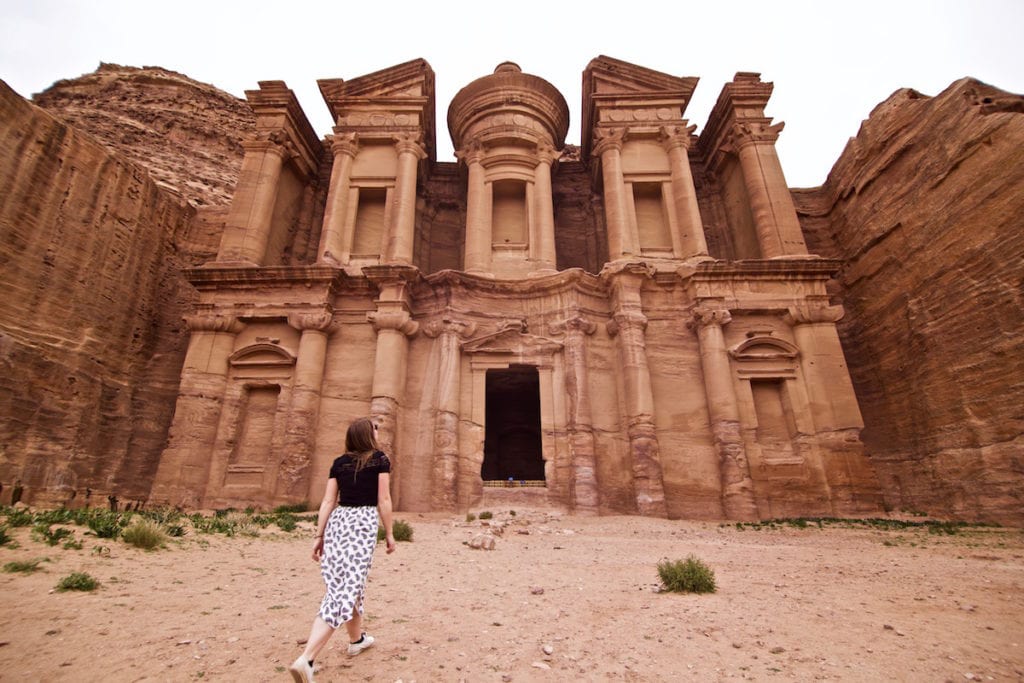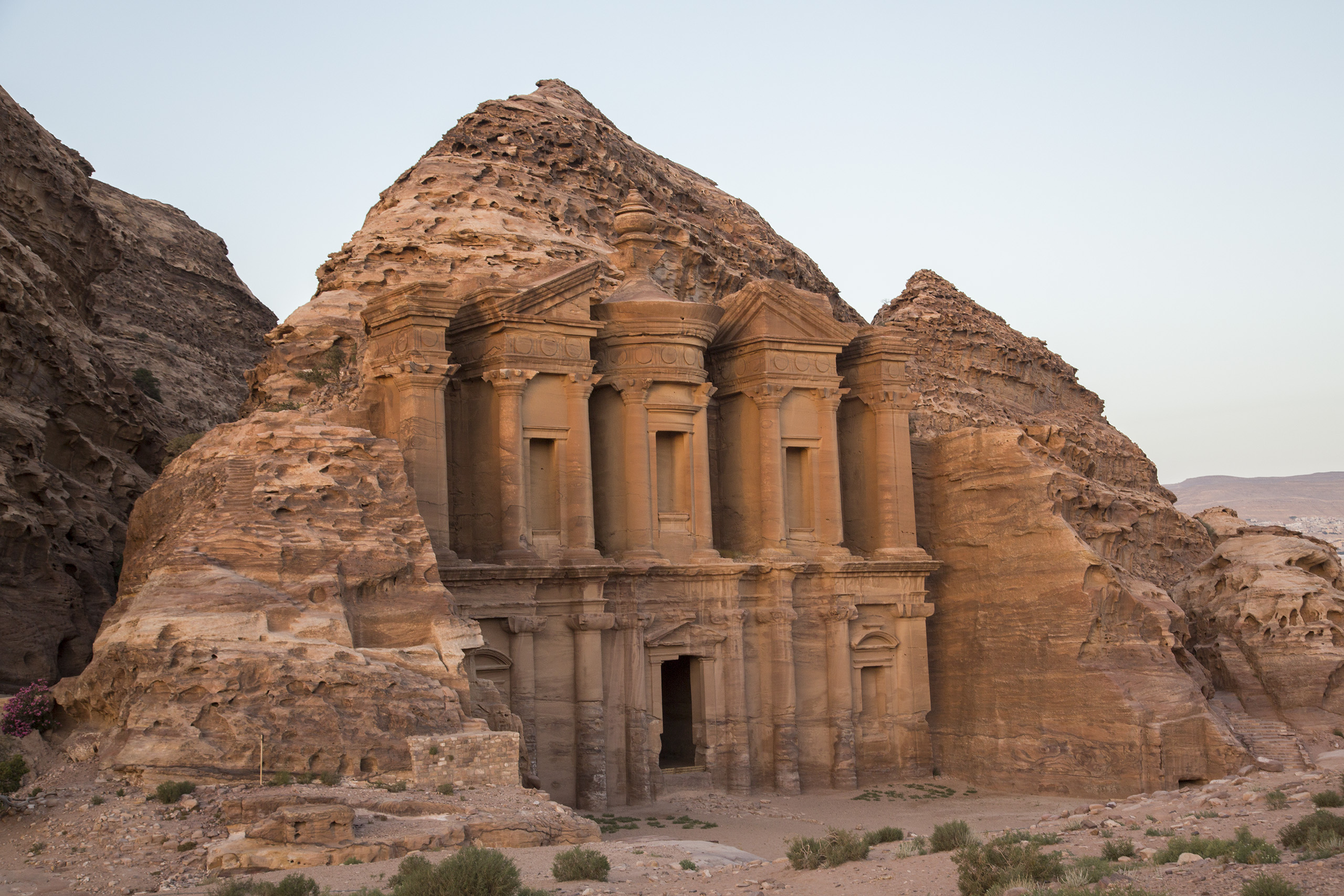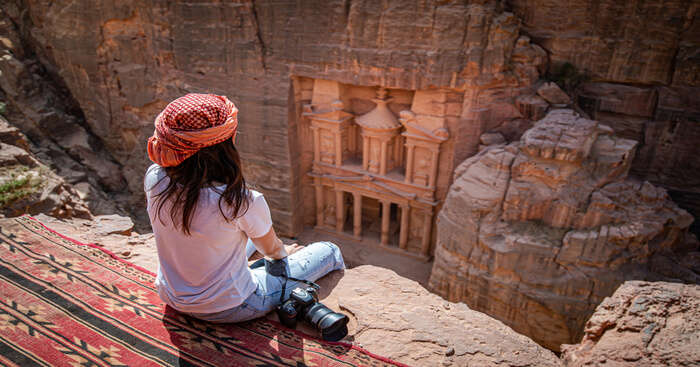Embarking on a journey to explore Petra is like stepping into a time machine, transporting you to an ancient world of wonder. Nestled in the heart of Jordan, this UNESCO World Heritage site boasts breathtaking rock-cut architecture, including the iconic Treasury. But Petra is more than just its famous facade; it’s a sprawling archaeological wonderland. Follow me as we unravel the secrets of this desert jewel, from the majestic Monastery to the hidden tombs that whisper stories of civilizations past. Let’s embark on a journey to explore Petra like never before!
1. Arrival and Entry
Your adventure begins at the entrance to Petra, known as the “Siq.” To access Petra, you’ll need to purchase a ticket at the visitor center. Be sure to grab a map and consider hiring a local guide who can provide invaluable historical insights.
 Read more – Rome Visit in October: Embracing the Eternal City’s Autumn Charm
Read more – Rome Visit in October: Embracing the Eternal City’s Autumn Charm
2. The Siq: A Magical Entrance
As you walk through the narrow, winding Siq, the sheer sandstone walls will soar above you, creating an otherworldly atmosphere. The Siq is over a kilometer long and leads to the Treasury, Petra’s most famous facade. Along the way, keep an eye out for the intricately carved niches and channels that once transported water to the city.
3. The Treasury (Al-Khazneh)
Emerging from the Siq, you’ll be greeted by the awe-inspiring sight of the Treasury. Carved into the rose-red cliffs, this architectural masterpiece is adorned with intricate carvings and stands as a testament to the ancient Nabateans’ engineering and artistic prowess. Take your time to explore its details and perhaps even join a guided tour for historical insights.
Read more – Exploring Santorini’s Enchanting Beauty in December
4. The Royal Tombs
Within easy strolling distance from the Treasury, one encounters the Street of Facades, a mesmerizing alley showcasing an array of exquisite rock-cut sepulchers. These burial chambers served as the ultimate repose for Nabatean rulers, imparting a vivid testament to the city’s opulent heritage. Don’t miss the opportunity to venture into the grander tombs, such as the Urn Tomb and the Silk Tomb, both welcoming visitors to delve into their captivating mysteries.
5. The Theater
As you venture deeper into Petra, you’ll come upon the Roman Theater, an immense edifice skillfully hewn into the rocky cliffs. With a capacity to host more than 3,000 spectators, this grand theater served as a stage for diverse performances during its prime. For a breathtaking vista of the encompassing landscape, ascend to its summit and savor the panoramic views.
Read more – Unlocking the Charm of Nainital: Your Ultimate Nainital Trip Guide
6. The Monastery (Ad-Deir)
For the more adventurous explorers, a hike up to the Monastery is a must. It’s a challenging climb of around 800 steps, but the reward is well worth it. The Monastery is even larger than the Treasury and offers breathtaking vistas of Petra and the surrounding desert.

Read more – Unlocking the Mysteries of Bhutan and Beyond: A Journey to Remember
7. Petra by Night
If you have the opportunity, don’t miss Petra by Night. This enchanting experience involves walking through the candlelit Siq to reach the Treasury, which is illuminated by thousands of candles. It’s a magical way to see Petra and hear Bedouin music and tales under the starry desert sky.
8. Beyond the Main Attractions
While Petra’s renowned landmarks such as the Treasury, Royal Tombs, Theater, and Monastery undoubtedly captivate attention, the city holds an abundance of hidden treasures waiting to be uncovered. Embrace the enchantment of strolling down its ancient streets, venture towards the majestic Great Temple, and ascend to the awe-inspiring High Place of Sacrifice for panoramic vistas that will leave you breathless. Along your journey, you’ll encounter a tapestry of caves and concealed tombs, each whispering a unique narrative of its own.
Read more – Embark on a Mesmerizing Kerala Trip: Exploring the Hidden Gems
9. Local Cuisine and Hospitality
Exploring Petra can be tiring, so be sure to take breaks and savor some local Jordanian cuisine. Try dishes like Mansaf, a traditional lamb dish, and indulge in a cup of sweet Bedouin tea. The locals are known for their warm hospitality, so don’t hesitate to strike up conversations and learn about their way of life.
10. Respect and Preservation
As you explore Petra, remember the importance of responsible tourism. Help preserve this ancient wonder by not touching or climbing on the fragile carvings, disposing of trash responsibly, and supporting local initiatives that aim to protect Petra’s heritage.
Read more – Exploring the Unparalleled Phuket Beauty: 10 Best Places to Visit
11. Time Your Visit
The best times to visit Petra are during the spring (March to May) and autumn (September to November) when the weather is pleasant. Summers can be scorching, while winters can be surprisingly chilly. Plan your visit accordingly.

Read more – Peris Travel Tips: How to Explore Peris in 5 Days
12. Practical Tips
- Wear comfortable walking shoes and dress appropriately for the weather.
- Carry a refillable water bottle, as staying hydrated is crucial.
- Sunscreen, a hat, and sunglasses are essential for protection against the desert sun.
- Respect local customs and be mindful of cultural differences.
Read more – Exploring the Timeless Magnificence of Bhatner Fort, Hanumangarh
In conclusion, Exploring Petra is an unforgettable journey through time and history. As you navigate this ancient wonder, remember to start early to beat the crowds and witness the rose-red city bathed in the soft morning light. Take your time, savor every moment, and don’t miss the iconic Treasury. Beyond the obvious, venture off the beaten path to discover hidden gems like the Monastery and the High Place of Sacrifice. Immerse yourself in the culture, chat with locals, and embrace the mystique of this unique archaeological treasure. Explore Petra not just as a tourist, but as an intrepid explorer, and you’ll create memories to last a lifetime.




